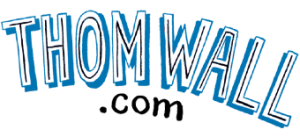Act Creation Method #1 – The Postcard Method
I first learned about this in a workshop with the show “Button Wagon” by juggler Matt “Poki” McCorkle and contortionist Ember Bria.
A “postcard moment” is a static stage picture where something interesting is happening that is nicely composed in a 2-d picture plane. If you were to take a photo of this moment as it happens on stage, then show that image to a stranger on the street, they would be interested in seeing the rest of the act.
Physical posters and postcards that captured these “postcard moments” were a primary source of marketing for Vaudeville shows. The power of a single static image hasn’t changed since then – it’s still an excellent way to get your act into- and stay in- peoples’ minds. Below are a few examples of Vaudeville posters that caught the imagination of passers-by. These are all great examples of a single image that strikes the viewer. What makes these so compelling? How can you recreate these moments in your work?
Considering single moments in time in your act is an excellent exercise. The practice forces you to stop thinking about skills and choreography and start thinking about images as they are displayed on stage. What makes the images below interesting to look at?
It’s important to have recognizable moments like this, especially in the variety arts. Many jugglers get stuck in “juggler brain” – writing acts that rely heavily on technical tricks that, while difficult and impressive, are hard for lay people to understand when they see them. Most “juggler brain” tricks are interesting to jugglers because they’re hard or because they have subtle variations that are lost on non-juggling audiences (“Did you notice that the second 4 in that 8448641 was a shoulderthrow? Wasn’t that awesome?!”) A nice litmus test- If you took a photo of this moment on stage, you would see a juggler with a mess of objects above their head, or would you see something that tells a more interesting story? If you took a photo and looked at the composition of the objects on stage, would it be compelling? Finding a way to put that juggler onto a stage in an interesting way that pays attention to the physical staging and image the juggling creates rather than solely relying on the wow factor is what separates a good juggling act from a good piece of performance art.
How I use this method:
I use the postcard method as a first step when writing a new act. When I’m working out the beats of a routine, I like to find images that might be interesting. These images include:
– Ways that props are stored, displayed, or are otherwise seen on stage when not being manipulated. Ways that these objects relate to one another (visible or not? obscure on another? stack? balance? in a row?)
– Ways that the juggler can related to the physical space (ways to get high up, low down, on top of things, underneath things, etc.
– Ways that the juggler relates to the objects on stage (emotional relationships, physical relationships)
I document these potential moments in a sketchbook – by drawing pictures of these moments, I’m forced to focus on the stage picture created instead of the raw skill needed to accomplish trick. After finding a slew of these moments, I start devising ways in and out of them in the studio.
Here are a few samples from my current notebook:
Have you used this method before? How do you think about static images when writing an act?



























Leave a Reply
Want to join the discussion?Feel free to contribute!